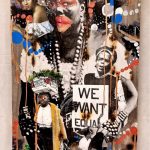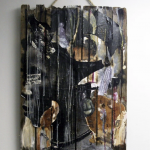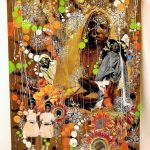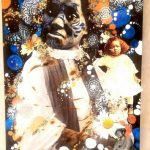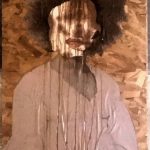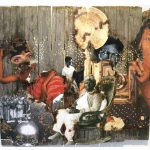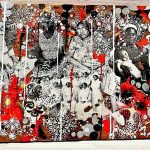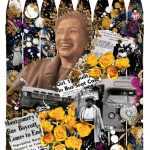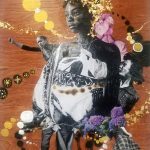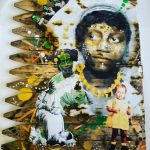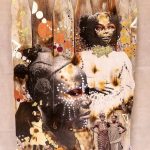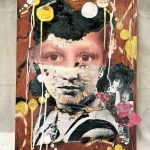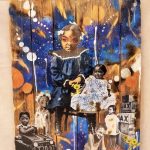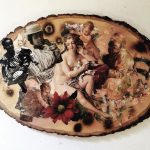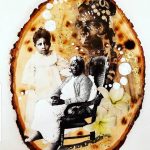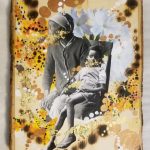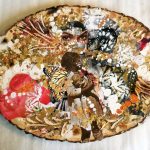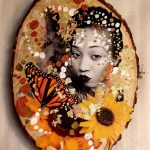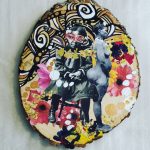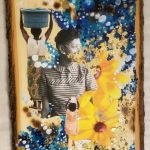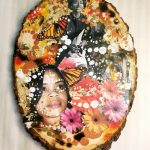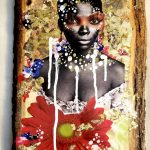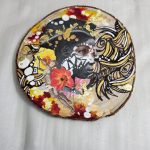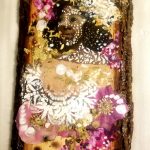August 28 – Oct 1, 2020
Merion Hall Gallery
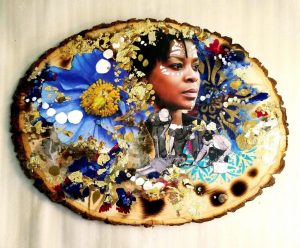
Artist Talk, Friday, September 11, 4pm.
To reserve a spot in person, please email jbracy@sju.edu. There will be a 20 person limit. Click the registration link to attend the event virtually via a zoom webinar.
Lavett Ballard is a contemporary artist who uses collage to interrogate presumptions about race, gender, and perception. Her collages combine archival photography, magazine cutouts, and a wide range of materials, such as copper foil, wax, and even hair, and she adheres them to particle board, birch, and even old fences. Her process welcomes accident, which highlights their materiality. Ballard’s collages put past and present into dialogue with each other and encourage viewers to look more closely while at the same time taking in the picture her various sources create. The artist conducts a great deal of research to find her images, and the story behind the person is just as important, if not more important, than the image itself. In Ballard’s images of women, the women tell their own stories.
– Emily Hage, PhD.
Chair, Art and Art History Department
Associate Professor, Art History
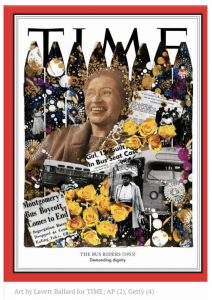
1955: The Bus Riders, Demanding Dignity was created by mixed-media artist Lavett Ballard for the cover of TIME magazine as a part of their 100 Women of the Year in History project. Ms. Ballard described the moment that she received the email from TIME magazine commissioning her to create a piece for the project as “surreal”. She thought that the email was a prank but then went on to speak with D.W. Pine, the Creative Director of TIME magazine, two days later.
The piece is constructed on reclaimed wood fencing and features a color palette of gold, purple, blue, yellow, and white. Rosa Parks is featured in the center. Ms. Ballard was allowed almost complete artistic freedom with the project. Ms. Ballard was only instructed to highlight Rosa Parks and the other women who started the Montgomery Bus Boycott of 1955; Aurelia Browder, Claudette Colvin, and Mary Louise Smith. All of these women were arrested for sitting in front of a segregated bus in Montgomery, Alabama. Ms. Ballard’s work features women who go unrecognized which is why she was the perfect fit for this project. Other unrecognizable women are featured in this piece from newspaper cutouts. Of these women Ballard says they “had a life, a family, and it has been erased. All there is is that snapshot that tells a little bit of their life story.” Ms. Ballard uses wood fencing as a canvas for her pieces due to the connection she identifies between wood and history. She believes wood is “stuck in time”, making it the perfect backdrop for this historical piece. The yellow roses build the narrative of the artwork because they were used a symbol of freedom during the Civil Rights movement. Ms. Ballard said that she wanted to use the term freedom without including the actual word in the art. Around Rosa Park’s head is a gold halo or crown. Ms. Ballard likes to make the women in her work look like goddesses, making these women who have gone unrecognized look powerful. The background of the piece is meant to look like a starry night.
Ms. Ballard called the release of the artwork on the cover of TIME “bittersweet” due to it coinciding with the COVID-19 Pandemic. She hopes that soon people will be able to see the artwork in person to fully appreciate it. Saint Joseph’s University is the first public display of this piece as well as Broken Yet Healed, The Shaman and The Givers.
~ Elisabetta Mannello ‘21
Gallery Exhibition Research Assistant

